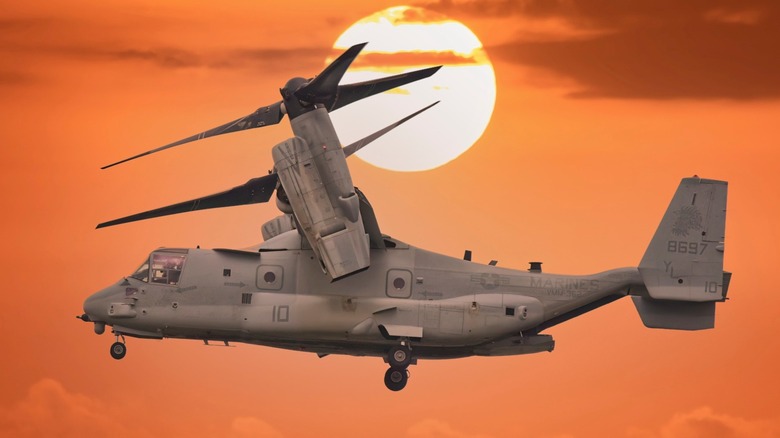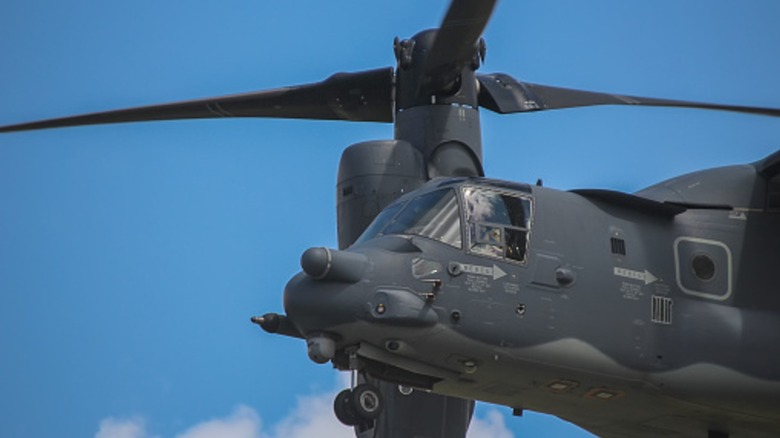Can The Bell Boeing V-22 Osprey Fly With Just One Engine?
The Bell Boeing V-22 Osprey was a unique aircraft when it first took flight in 1989 before it became the world's first successful military tiltrotor aircraft, merging the ability to take off and land vertically like a helicopter with the range and speeds of a turboprop plane. The two Rolls-Royce Liberty AE1107C engines each produce more than 6,200 shaft horsepower and spin twin rotors that are 38-feet in diameter. The V-22 Osprey is a versatile aircraft with plenty of strengths and weaknesses.
It can transport as many as 24 troops if they're seated, 32 if some are standing, or up to 10,000 pounds of cargo. When the Osprey needs to land or take off vertically — or hover — the nacelles (that is, the engine and propeller rotor together) will rotate 90-degrees so the rotors generate thrust downward, letting the aircraft perform like a helicopter. When it needs to function like a traditional plane, the nacelles will rotate back to the forward position. And just like many traditional planes, the V-22 Osprey can continue flying with only one functioning engine.
Hovering is a different story if an Osprey is down to a single engine, though. In that instance, the Osprey would have to be at a low altitude and not carrying too much cargo. It might seem odd to wonder if an airplane, or rather a tiltrotor, can fly with only one engine since ideally they'll always be flying with two. However, when it comes to the V-22 Osprey or one of its variants, that's a valid question — especially given its questionable safety record.
Engine failure is a concern for the V-22 Osprey
Despite the Osprey being a game changer for aerial operations, it hasn't had the prettiest of safety records. Since its entry into the U.S. armed forces over 20 years ago, it has experienced more than 21 incidents that have resulted in around 93 injuries and 64 deaths. As recently as 2024, the entire fleet of Ospreys in the U.S. military was grounded after one nearly crashed in New Mexico. A similar incident took place in Japan, leading Japan's Ground Self-Defense Force to ground its fleet of more than a dozen V-22 Ospreys.
Just a year prior, one crash claimed the lives of eight U.S. service members off the coast of Japan. The Associated Press dug in to investigate many of the incidents that have taken place over the years, and found that "the top three most serious types of incidents rose 46% between 2019 and 2023, while overall safety issues jumped 18% in the same period before the fleet was grounded." The safest years for the Osprey community were between 2018 and 2021, when there wasn't a single mishap.
Investigators found that some incidents between 2010 and 2020 were caused by a problem with the clutch in the rotor gearbox. It's what's called a hard clutch engagement, which is when the "clutch releases from the rotor system and suddenly reengages," that ends up causing a loss of lift, according to investigators (via NBC News). Unfortunately, that's not the cause for every crash and the military has yet to discover the root cause of all the incidents.

